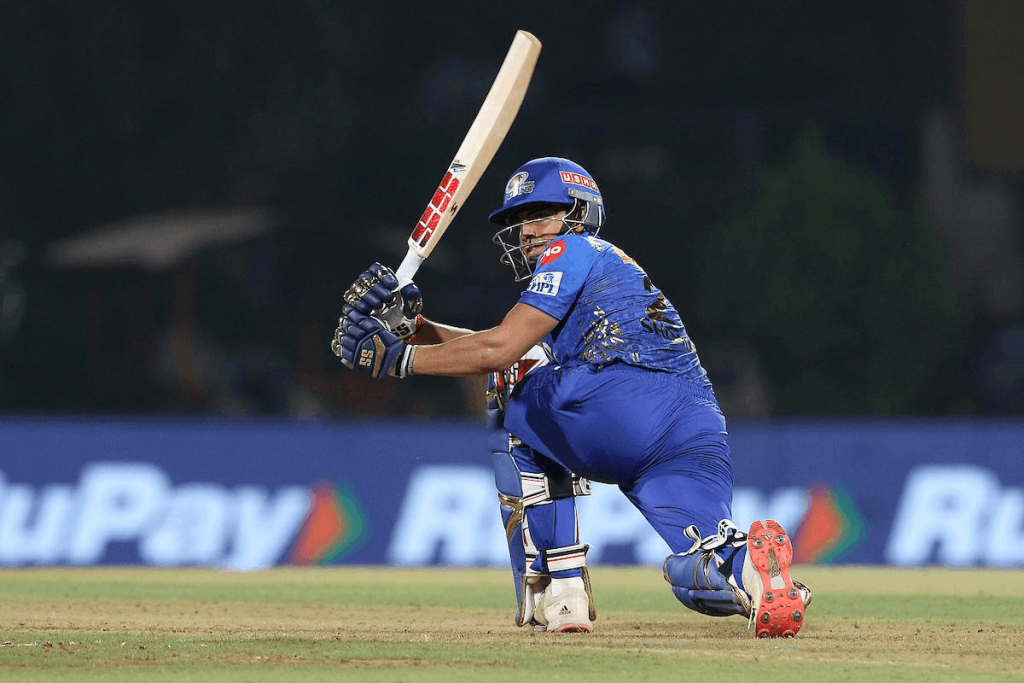Game-Changing Rule: Impact Player Regulation Alters IPL Dynamics
There were also further factors, such as the loss of home advantage and the growth of domestic competitors.

Here are the critical lessons learned from IPL 2023, which is already in the past, and Chennai Super Kings are once again the dominant team.
No benefit exists for homeowners.
Teams benefited from their home field less than they did in previous seasons during this unusual season. Only 27 of the 69 completed games in the league stage were victories for the home team. It was the worst victory % of any IPL season, at 39.1. In 2012, the previous low was 44.3%.
Only three teams had a winning home record: Mumbai Indians, Chennai Super Kings, and Gujarat Titans. The lowest performers were Sunrisers Hyderabad and Punjab Kings, who each managed just one victory out of seven home games. In contrast, Delhi Capitals, Kolkata Knight Riders, and Rajasthan Royals managed two wins.
Since the tournament was being played in a home-and-away format after three seasons, it took the teams some time to get reacquainted with their respective home environments. Due to the lineup changes made during the 2022 mega sale, some players needed to familiarize themselves with their new home stadiums.
Maximizing the impact of player’s contribution
The circumstances surrounding the regulation before the start of the competition. Though practically all the teams had adopted a template by the end of the first week: if batting first, use an additional batter; if not, replace the representative with a bowler in the second innings. Consequently, cricket evolved into a 12 against-12 match with deeper batting and bowling.
The Royals were the only side that occasionally fielded just five bowlers in their bowling XI, failing to utilize this opportunity fully.
Mumbai in the Eliminator and a few other teams early in the competition demonstrated a more efficient approach. Mumbai, who were batting first against the Lucknow Super Giants, only had one batter, which gave them a chance to add another bowler while defending.
But things did not proceed as expected. After a brief slump, Mumbai was forced to replace Suryakumar Yadav with batter Nehal Wadhera as their Impact Player. However, as they already possessed a second bowler in their starting XI, there was no drawback. Other clubs may adopt Mumbai’s first-inning tactic if the Impact Player rule is maintained in the IPL.
Quick runs and huge totals
This IPL season has the most points scored by far. Runs were scored at an average rate of 8.99 per over, which is much higher than the previous high of 8.64 set in 2018.
An essential factor in it was the Impact Player regulation. The clubs could bat more freely with the other batter available and broke the previous mark of 18 last year, scoring 200 or more 37 times.
The scoring trends show they didn’t let up once teams got rolling. There were only a few mid-range totals as a result. Only 33.78% of first innings had scores between 140 and 179—the lowest for any season.
Field first if you win the toss? To reconsider
After winning the toss in T20 cricket, teams typically elect to chase. They can then time their innings following the goal. Dew can also aid them if the game is played at night.
The teams primarily used that model in IPL 2023 as well. In 53 of their 74 games, they decided to chase. However, they only managed to win 23, losing 29 and drawing one. Teams in pursuit had an overall win-loss record of 33-40. Only once before, in 2015, when they won 24 games and lost 32, did chasing teams experience worse conditions.
The Impact Player rule also came into play in this situation. The clubs batted less conservatively this year and consistently produced above-average totals thanks to the safety net of an additional batter. Dew also didn’t have a significant influence, making the defence somewhat more at ease.

The emergence of Indian domestic finishers
Mumbai’s owner Akash Ambani claimed that when they understood that Hardik Pandya would no longer be with them [having gone to Titans], his spot had to go to a foreign player since there was no one precisely like Hardik in India when they selected Tim David for INR 8.25 crore at the 2022 super auction.
That was accurate, but this season saw a significant shift in events. For the first time in IPL history, uncapped Indian hitters outperformed capped Indians and foreign players in the last overs.
Singh Rinku took the lead. Dhruv Jurel and Jitesh Sharma both engaged in harmful behaviour. Rahul Tewatia also acted in Rahul Tewatia-like ways. In the final four overs, uncapped Indian hitters had a strike rate 172.60; the remaining overs were 164.95.
Additional spin at the end
There has been a recent noticeable increase in IPL 2023’s use of spin at the end. Spinners bowled 8.6% of the death overs in 2021. In 2022, that proportion rose to 12.8%. This season’s 17.4% was the most since 2014 during an IPL season. The captains that utilized spin for at least one over in that phase were almost always Yuzvendra Chahal, Varun Chakravarthy, Rashid Khan, and Maheesh Theekshana. Significantly, spinners beat fast bowlers during that era, recording an economy of 9.19 and a strike rate of 11.4 per cent. For fast bowlers, the equivalent figures were 10.94 and 12.8.
Dive into the fascinating world of IPL 2023 and explore how the Impact Player rule revolutionized the game. Discover the dynamics that shaped the season, from the loss of home advantage to the emergence of uncapped Indian hitters. Uncover the high-scoring matches, reconsidered toss strategies, and the rise of spinners. Take advantage of this captivating journey through the IPL. Read the full article now and stay updated on the latest trends at Indibet Online and developments in cricket’s most exciting tournament.



